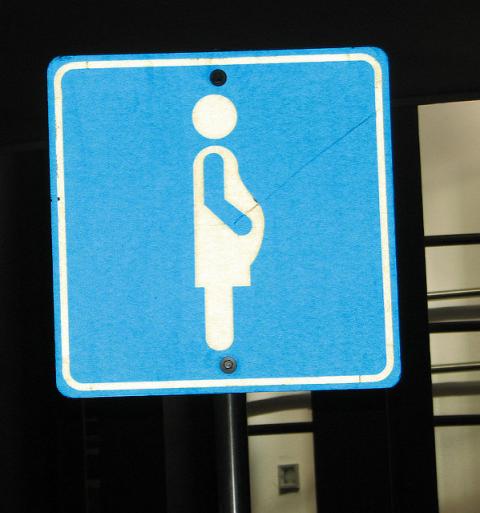Pregnancy and influenza

Women who are pregnant are more likely to have severe disease and hospitalisation with either seasonal or pandemic influenza, compared to the general population or compared to non-pregnant women of the same age group. During pandemics, the mortality rate for pregnant women is higher than non-pregnant women. However, this is not the case with seasonal influenza unless the strain is particularly severe (WHO 2010).
In terms of pandemics, pregnant women have an increased risk of severity of infection and a disproportionally high risk of mortality from H1N1 (Esteban-Vasallo et al 2011). In the first two months of the H1N1 flu pandemic in 2009 in the United States, a majority of the cases that were hospitalised were women (n=21/26), and of these women five were pregnant. During the pandemic, females of a reproductive age were much more likely to be hospitalised with critical illness than men in a number of countries (WHO 2010).
There are a number of reasons why pregnant women are more at risk of influenza. Hormonal changes during pregnancy, chiefly oestrogen and progesterone, underlie some of the distinct immunological changes that accompany pregnancy (Klein et al 2010). The risk of complications from influenza increases in the second and third trimester, when the physiological changes accompanying pregnancy, such as increased demands on cardiovascular output, play a role. Also, the immune function change that is associated with pregnancy, which serves to prevent the woman’s immune system from rejecting the foetus, reduces the capacity of the pregnant woman to mount the strong antiviral response that is needed to control a viral infection (Jamieson et al 2009).
Nevertheless, there appears to be very little risk of direct infection of the foetus if the mother contracts influenza, and the effect of fever resulting from the influenza does not appear to lead to foetal abnormalities (WHO 2010). There is limited research done on vaccine safety in pregnant women, however studies suggest the vaccine is safe, and there are no indications that vaccination causes harm (ECDC 2012). In general, vaccination of pregnant women serves to protect both the woman and the foetus (Klein et al 2010).
Existing studies on pregnant women who have taken the influenza vaccine show no adverse risks or side effects on the mother, foetus, or the child once it is born – rather, there is a good record of administering the vaccine, particularly in the second and third trimester (WHO 2010).
The WHO recommends all pregnant women to receive vaccinations during the influenza season, and that they should be given highest priority among all the risk groups (WHO 2012). Yet, despite recommendations and despite the increased risk of illness and mortality that accompanies pregnant women getting influenza, vaccine covers of pregnant women tend to lag behind those seen in the general population (Klein and Pekosz 2014).
There are a number of reasons behind this low figure. Evidence points to pregnant women not knowing of the increased risks associated with pregnancy and influenza; also, many health care providers do not recommend pregnant women to take a pandemic or seasonal influenza vaccine due to concerns over giving a vaccine to a pregnant woman (WHO 2010). Such inconsistent advice from relevant health care providers is an obvious obstacle to uptake of vaccination for pregnant women (ECDC 2013).
Data on pregnancy and vaccinations is scarce, and there is very little data on this from Europe. In terms of drivers and barriers for pregnant women, there is little evidence-based research resulting in weak information (ECDC 2013). It is not studied enough in human beings because of the risk to the mother and the foetus, but more research could be made on animals (Klein et al 2010). More research is needed to find the optimum dose of the vaccine, and to provide more data to firmly refute the hesitation towards giving pregnant women influenza vaccinations.
Very few studies have been done in Europe on influenza vaccine effectiveness in children – there is a paucity of research in this area (ECDC 2013). In terms of children, children younger than five years old showed the highest hospitalisation rate attributed to influenza; this age group also have the highest incidence of the disease in children under 18 years of age (ECDC 2012).
Influenza vaccination is generally well tolerated in children, and any adverse reactions reported were usually mild or moderate. Influenza vaccines are not licensed in children younger than six months old – there is therefore a lack of alternatives to treat children in this age group, who are in the risk group for exposure to influenza – nevertheless, recent studies have shown that influenza antibodies from the mother are transferred to the child (ECDC 2012).
